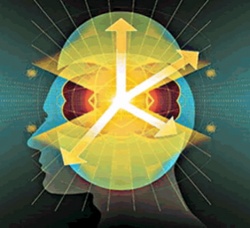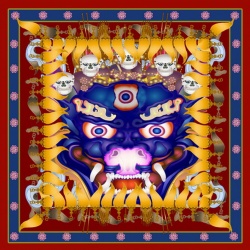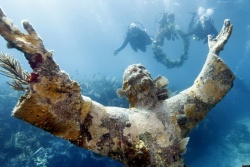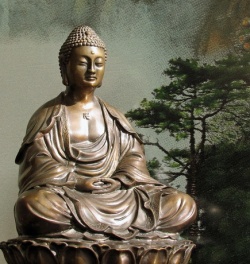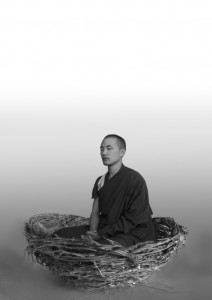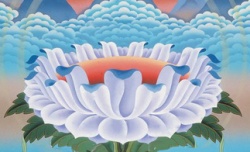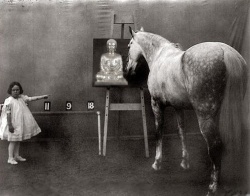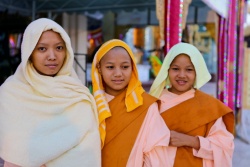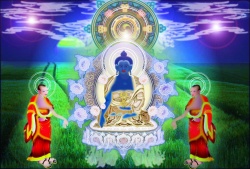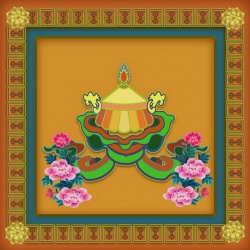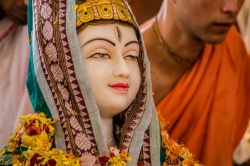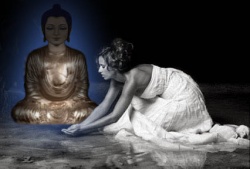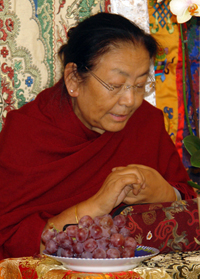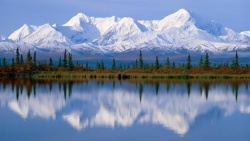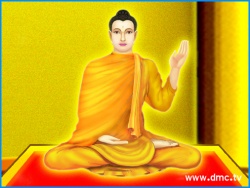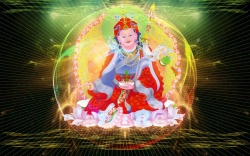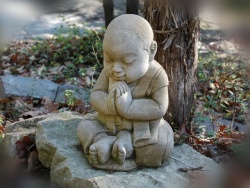Difference between revisions of "Kālacakra"
(Redirected page to Kalachakra) |
|||
| (5 intermediate revisions by 2 users not shown) | |||
| Line 1: | Line 1: | ||
| − | + | <nomobile>{{DisplayImages|1207|943|1184|2575|1864|2402|3532|2073|2817|4285|1355|496|4171|3248|2633|155|4496|191}}</nomobile> | |
| + | |||
| + | |||
| + | |||
| + | |||
| + | '''[[Kālacakra]]''' ([[Sanskrit]] [[कालचक्र]]; [[Tibetan ]]''[[dus kyi 'khor lo]]'') is a term used in [[Vajrayana|Tantric Buddhism]] that means "[[wheel of time|time-wheel]]" or "[[time-cycles]]". | ||
| + | |||
| + | It refers both to [[Tantric deities]] (Tib. [[Yi-dam]] | ''[[yidam]]'') of [[Vajrayana Buddhism]] and to the [[philosophies]] and [[meditation practices]] contained within the ''[[Kālacakra Tantra]]'' and its many commentaries. | ||
| + | |||
| + | The [[Kālacakra Tantra]] is more properly called the ''[[Kalachakra Laghutantra]]'', and is said to be an abridged [[form]] of an original text, the ''[[Kalachakra Mulatantra]]'' which is no longer extant. | ||
| + | |||
| + | Some [[Buddhist masters]] assert that [[Kalachakra]] is the most advanced and effective [[form]] of [[Vajrayana practice]] | ||
| + | |||
| + | The [[Kālacakra tradition]] revolves around the [[concept of time]] and cycles: from the cycles of the {{Wiki|planets}}, to the cycles of [[human]] [[breathing]], it teaches the practice of controlling the most {{Wiki|subtle}} energies within one's [[body]] on the [[path to enlightenment]]. | ||
| + | |||
| + | The [[Kalachakra]] [[deity]] represents a [[Buddha]] and thus [[omniscience]]. Since the [[Buddha]] ''is'' time and everything is under the influence of time, the [[Buddha]] therefore [[knows]] all. Similarly, the [[wheel]] is without beginning or end. | ||
| + | |||
| + | |||
| + | ==The [[Kalachakra Laghutantra]]== | ||
| + | |||
| + | |||
| + | The [[Kalachakra Tantra]] is divided into five chapters, the first two of which are considered the “ground [[Kalachakra]].” The first [[chapter]] deals with what is called the “outer Kalachakra”—the [[physical world]], in particular the calculation system for the [[Kalachakra calendar]]. | ||
| + | |||
| + | It also explicates the basic [[symbolism]] of the [[Kalachakra system]] | ||
| + | |||
| + | |||
| + | The second [[chapter]] deals with the “[[inner Kalachakra]],” and concerns {{Wiki|processes}} of [[human]] {{Wiki|gestation}} and [[birth]], the {{Wiki|classification}} of the functions within the [[human body]] and [[experience]], and the [[vajra-kaya]]—the expression of [[human]] [[physical existence]] in terms of channels, [[winds]], drops and so forth. | ||
| + | |||
| + | [[Human]] [[experience]] is described as consisting of four [[mind states]]: waking, [[dream]], deep [[sleep]], and a fourth [[state]], the [[experience]] of {{Wiki|sexual}} {{Wiki|orgasm}}. | ||
| + | |||
| + | The potentials (drops) which give rise to these states are described, together with the {{Wiki|processes}} that flow from them. | ||
| + | |||
| + | |||
| + | |||
| + | The last three chapters describe the “other [[Kalachakra]],” and deal with the [[path and fruition]]. | ||
| + | |||
| + | The third [[chapter]] deals with the preparation for the [[meditation practices]] of the system, the [[initiations]] of [[Kalachakra]]. | ||
| + | |||
| + | The fourth [[chapter]] explains the actual [[meditation practices]] themselves, both the [[meditation]] on the [[mandala]] and [[deity]] of [[Kalachakra]] in the generation process, and the [[perfection]] process of the [[Six Yogas]]. | ||
| + | |||
| + | The fifth and final [[chapter]] describes the [[state of enlightenment]] that results from the practice. | ||
| + | |||
| + | |||
| + | |||
| + | ==[[Initiation]]== | ||
| + | |||
| + | |||
| + | The [[Kalachakra]] [[initiations]] [[empower]] the [[disciple]] to practice the [[yoga]] of the [[Kalachakra tantra]] in the service of [[attaining Buddhahood]]. | ||
| + | |||
| + | There are two main sets of [[initiations]] in [[Kalachakra]], eleven in all. | ||
| + | |||
| + | The first of these two sets concerns preparation for the [[generation stage]] [[meditations]] of [[Kalachakra]] and requires the use of the a [[Kalachakra]] powder [[mandala]]. | ||
| + | |||
| + | The second concerns preparation for the [[completion stage]] [[meditations]] known as the [[Six Yogas of Kalachakra]]. | ||
| + | |||
| + | Attendees who don’t intend to carry out the practice are generally only given the lower seven [[initiations]]. | ||
| + | |||
| + | |||
| + | |||
| + | ==[[Astrology]]== | ||
| + | |||
| + | |||
| + | The [[phrase]] "as it is outside, so it is within the [[body]]" is often found in the [[Kalachakra tantra]] to {{Wiki|emphasize}} the similarities between [[human beings]] and the [[cosmos]]; | ||
| + | |||
| + | This {{Wiki|concept}} is the basis for [[Kalachakra]] [[astrology]], but also for even more profound connections and [[interdependence]] as [[taught]] in the [[Kalachakra]] {{Wiki|literature}}. | ||
| + | |||
| + | |||
| + | In [[Tibet]], the [[Kalachakra]] [[astrological]] system is one of the main building blocks in the composition of [[Tibetan calendar|Tibetan astrological calendars]]. | ||
| + | |||
| + | The [[astrology]] in the [[Kalachakra]] is not unlike the [[Western]] system, in which complicated calculations are required to determine, for example, the exact location of the {{Wiki|planets}}. | ||
| + | |||
| + | |||
| + | |||
| + | ==History== | ||
| + | ===[[Indian]] Origin=== | ||
| + | According to the [[Kalachakra]] legend, [[King]] [[Suchandra]] (Tib. ''[[Dawa Sangpo]]'') of the northeastern [[Indian]] {{Wiki|Kingdom}} of [[Shambhala]] requested [[teaching]] from the [[Buddha]] that would allow him to practice the [[dharma]] without renouncing his [[worldly]] enjoyments and responsibilities. | ||
| + | |||
| + | In response to his request, the [[Buddha]] gave the first [[Kālachakra]] [[root tantra]] in [[Wikipedia:Dharanikota|Dhanyakataka]] ({{Wiki|present}} day [[Amravati]]), a small town in [[Andhra Pradesh]] in southeastern [[India]], supposedly [[emanating]] at the same time he was also delivering the [[Prajna Paramita]] [[sutras]] at [[Vulture Peak Mountain]]. | ||
| + | |||
| + | Along with [[King Suchandra]], ninety-six minor [[kings]] and emissaries from [[Shambhala]] were also said to have received the teachings. | ||
| + | |||
| + | The [[Kalachakra]] thus passed directly to the [[Shambhala]], where it was held exclusively for hundreds of years. | ||
| + | |||
| + | |||
| + | Later [[Kings of Shambhala|Shambhalian kings]], [[Manjushrikirti]] and [[Pundarika]], are said to have condensed and simplified the teachings into the "[[Sri Kalachakra]]" and commentaries, all of which remain extant today as the [[heart]] of the [[Kalachakra]]. | ||
| + | |||
| + | |||
| + | |||
| + | There are presently two main [[traditions]] of [[Kalachakra]], the [[Ra lineage]] (Tib. ''[[Rva-lugs]]'') and the [[Dro lineage]] (Tib.'''[[Bro-lugs]]''). | ||
| + | |||
| + | |||
| + | Although there were many translations of the [[Kalachakra]] texts from [[Sanskrit]] into [[Tibetan]], the Ra and [[Dro]] translations are considered to be the most reliable (more about the two [[lineages]] below). | ||
| + | |||
| + | The two [[lineages]] offer slightly differing accounts of how the [[Kalachakra teachings]] returned to [[India]] from [[Shambhala]]. | ||
| + | |||
| + | |||
| + | |||
| + | In both [[traditions]], the [[Kalachakra]] and its related commentaries (sometimes referred to as the ''[[Bodhisattvas]] Corpus'') returned to [[India]] during in 966 AD by an [[Indian]] [[Pandita]]. | ||
| + | |||
| + | In the [[Ra tradition]] this figure is known as [[Chilupa]], and in the [[Dro tradition]] as [[Kalachakrapada]] the Greater. | ||
| + | |||
| + | [[Scholars]] such as [[Helmut Hoffman]] have suggested they are the same [[person]]. | ||
| + | |||
| + | The first [[masters]] of the [[tradition]] disguised themselves with pseudonyms, so the [[Indian]] [[oral traditions]] recorded by the [[Tibetans]] contain a {{Wiki|mass}} of contradictions. | ||
| + | |||
| + | |||
| + | [[Chilupa]]/[[Kalachakrapada]] is said to have set out to receive the [[Kalachakra teachings]] in [[Shambhala]], along the journey to which he encounters the [[Kulika]] [[king]] [[Durjaya]] [[manifesting]] as [[Manjushri]], who conferred the [[Kalachakra initiation]] on him based on his [[pure]] [[motivation]]. | ||
| + | |||
| + | |||
| + | Upon returning to [[India]], [[Chilupa]]/[[Kalachakrapada]] is said to have defeated in [[debate]] [[Nadapada]] (Tib. ''[[Naropa]]''), the [[abbot]] of [[Nalanda]] {{Wiki|University}}, a great center of [[Buddhist]] [[thought]] at that time. | ||
| + | |||
| + | [[Chilupa]]/[[Kalachakrapada]] then [[initiated]] [[Nadapada]] (who became known as [[Kalachakrapada]] the Lesser) into the [[Kalachakra]], and the [[tradition]] as it was known thereafter in [[India]] and [[Tibet]] stemmed from these two. | ||
| + | |||
| + | [[Nadapada]] established the teachings as legitimate in the [[eyes]] of the [[Nalanda]] {{Wiki|community}}, and [[initiated]] into the [[Kālachakra]] such [[masters]] as [[Atisha]] (who, in turn, [[initiated]] the [[Kālachakra]] [[master]] [[Pindo Acharya]] (Tib. ''[[Pitopa]]'')). | ||
| + | |||
| + | |||
| + | The [[Kalachakra tradition]], along with all [[Vajrayana Buddhism]], vanished from [[India]] in the wake of the [[Muslim]] invasions. | ||
| + | |||
| + | |||
| + | |||
| + | ===[[Kalachakra Tradition]] in [[Tibet]]=== | ||
| + | |||
| + | |||
| + | The [[Dro lineage]] was established in [[Tibet]] by a [[Kashmiri]] [[disciple]] of [[Nalandapa]] named [[Pandita Somanatha]], who traveled to [[Tibet]] in 1027 (or 1064 AD, depending on the [[calendar]] used), and his [[translator]] [[Droton Sherab Drak Lotsawa]], from which it takes its [[name]]. | ||
| + | |||
| + | This [[Dro lineage]] has been sustained primarily by the [[Jonang tradition]]. | ||
| + | |||
| + | The [[Ra lineage]] was brought to [[Tibet]] by another [[Kashmiri]] [[disciple]] of [[Nadapada]] named [[Samantashri]], and translated by [[Ra Choerab Lotsawa]] (or [[Ra Dorje Drakpa]]). | ||
| + | |||
| + | The [[Ra lineage]] became particularly important in the [[Sakya]] [[tradition]] of [[Tibetan Buddhism]], where it was held by such prominent [[masters]] as [[Sakya Pandita]] (1182-1251), [[Drogon Chogyal Pagpa]] (1235-1280), [[Budon Rinchendrup]] (1290-1364), and [[Dolpopa Sherab Gyaltsen]] (1292-1361) who recieved a [[Sakya]] [[education]] at an early age but was one of the great [[Jonang]] [[masters]]. | ||
| + | |||
| + | The [[latter]] two, both of whom also held the [[Dro lineage]], are particularly well known expositors of the [[Kalachakra]] in [[Tibet]], the practice of which is said to have greatly informed [[Dolpopa’s]] [[exposition]] of the [[zhentong]] or [[shentong]] view upheld by the [[Jonang]]. | ||
| + | |||
| + | A strong {{Wiki|emphasis}} on [[Kalachakra practice]], along with [[exposition]] of the [[zhentong]] view, are the [[principle]] distinguishing [[characteristics]] of the [[Jonang]] [[tradition]] that [[Dolpopa]] upheld. | ||
| + | |||
| + | |||
| + | |||
| + | The [[teaching]] of the [[Kalachakra]] was further advanced by the great [[Jonang]] [[scholar]] [[Taranatha]] (1575-1634). | ||
| + | |||
| + | In the 17th century, the [[Gelug]]-led government of [[Tibet]] outlawed the [[Jonang tradition]] for {{Wiki|political}} [[reasons]], closing down or forcibly converting most of its [[monasteries]] in {{Wiki|Central Tibet}}. | ||
| + | |||
| + | The writings of [[Dolpopa]], [[Taranatha]], and other prominent [[scholars]] were banned. | ||
| + | |||
| + | Ironically, it was also at this time that the [[Gelug lineage]] absorbed much of its [[Kalachakra]] [[tradition]] from the [[Jonang]]. | ||
| + | |||
| + | |||
| + | Today [[Kalachakra]] is practiced by all five [[Tibetan traditions]] of [[Buddhism]], although it appears most prominently in the [[Jonang]] and [[Gelug]] [[lineages]]. | ||
| + | |||
| + | It remains central to the [[Jonang]] [[tradition]] which [[exists]] in [[Eastern Tibet]]. | ||
| + | |||
| + | [[Khenpo Kunga Sherab Rinpoche]] is one contemporary [[Jonangpa]] [[master]] of the [[Kalachakra]]. | ||
| + | |||
| + | |||
| + | |||
| + | ==[[Kalachakra Practice]] Today in the Five [[Tibetan Buddhist]] Schools== | ||
| + | |||
| + | |||
| + | Buton had considerable influence on the later [[development]] of the [[Gelug]] and [[Sakya]] [[traditions]] of [[Kalachakra]], and [[Dolpopa]] on the [[development]] of the [[Jonang]] [[tradition]] on which the [[Kagyu]] and [[Nyingma]] draw. | ||
| + | |||
| + | The [[Kagyu]] and [[Nyingma]] rely heavily on the extensive, [[Jonang]]-influenced [[Kalachakra]] commentaries of [[Ju Mipham]] and [[Jamgon Kongtrul]] the Great, both of whom took a strong [[interest]] in the [[tradition]]. | ||
| + | |||
| + | |||
| + | It should be noted, however, that there were many other [[influences]] and much cross-fertilization between the different [[traditions]], and indeed [[His Holiness the Dalai Lama]] has asserted that it is acceptable for those [[initiated]] in one [[Kalachakra tradition]] to practice in others. | ||
| + | |||
| + | |||
| + | |||
| + | '''[[Gelugpa]]''' | ||
| + | |||
| + | The [[Dalai Lama]]s have had specific [[interest]] in the [[Kālachakra]] practice, particularly the [[Gedun Drub|First]], [[Gedun Gyatso|Second]], [[Kelzang Gyatso|Seventh]], [[Jamphel Gyatso|Eighth]], and the current ([[Tenzin Gyatso|Fourteenth]]) [[Dalai Lamas]]. | ||
| + | |||
| + | The {{Wiki|present}} [[Dalai Lama]] has given thirty [[Kalachakra initiations]] all over the [[world]], and is the most prominent [[Kalachakra lineage]] holder alive today. | ||
| + | |||
| + | Billed as the “[[Kalachakra]] for [[World]] [[Peace]],” they draw tens of thousands of [[people]]. Generally, it is unusual for such advanced teachings to be given to large public assemblages, but the [[Kalachakra]] has long been an exception. | ||
| + | |||
| + | The [[initiation]] is received as a [[blessing]] for the vast majority of those attending, although many attendees do subsequently engage in the practice as well. | ||
| + | |||
| + | |||
| + | [[Kalachakra Initiations]] given by H.H. XIV [[Dalai Lama]] | ||
| + | |||
| + | |||
| + | *1. [[Norbu Lingka]], [[Lhasa]], [[Tibet]], in May 1954 | ||
| + | *2. [[Norbu Lingka]], [[Lhasa]], [[Tibet]], in April 1956 | ||
| + | *3. {{Wiki|Dharamsala}}, [[India]], in March 1970 | ||
| + | *4. {{Wiki|Bylakuppe}}, {{Wiki|South India}}, in May 1971 | ||
| + | *5. [[Bodh Gaya]], [[India]], in December 1974 | ||
| + | *6. Leh, {{Wiki|Ladakh}}, [[India]], in September 1976 | ||
| + | *7. Madison, {{Wiki|USA}}, in July 1981 | ||
| + | *8. Dirang, [[Arunachal Pradesh]], [[India]], in April 1983 | ||
| + | *9. {{Wiki|Lahaul}} & {{Wiki|Spiti}}, [[India]], in August 1983 | ||
| + | *10. Rikon, [[Switzerland]], in July 1985 | ||
| + | *11. [[Bodh Gaya]], [[India]], in December 1985 | ||
| + | *12. [[Zanskar]], {{Wiki|Ladakh}}, [[India]], in July 1988 | ||
| + | *13. {{Wiki|Los Angeles}}, {{Wiki|USA}}, in July 1989 | ||
| + | *14. [[Sarnath]], [[India]], in December 1990 | ||
| + | *15. {{Wiki|New York}}, {{Wiki|USA}}, in October 1991 | ||
| + | *16. [[Kalpa]], HP, [[India]], in August 1992 | ||
| + | *17. [[Gangtok]], [[Sikkim]], [[India]], in April 1993 | ||
| + | *18. Jispa, HP, [[India]], in August 1994 | ||
| + | *19. Barcelona, {{Wiki|Spain}}, in December 1994 | ||
| + | *20. {{Wiki|Mundgod}}, {{Wiki|South India}}, in January 1995 | ||
| + | *21. Ulanbaator, [[Mongolia]], in August 1995 | ||
| + | *22. [[Tabo]], HP, [[India]], in June 1996 | ||
| + | *23. {{Wiki|Sydney}}, [[Australia]], in September 1996 | ||
| + | *24. Salugara, {{Wiki|West Bengal}}, [[India]], in December 1996. | ||
| + | *25. Bloomington, Indiana, {{Wiki|USA}}, in August 1999. | ||
| + | *26. [[Key Monastery]], {{Wiki|Spiti}}, [[Himachal Pradesh]], [[India]], in August 2000. | ||
| + | *27a. [[Bodhgaya]], [[Bihar]], [[India]], in January 2002 (postponed). | ||
| + | *27b. {{Wiki|Graz}}, {{Wiki|Austria}}, in October 2002. | ||
| + | *28. [[Bodh Gaya]], [[Bihar]], [[India]], in January 2003. | ||
| + | *29. {{Wiki|Toronto}}, [[Canada]], in April 2004. | ||
| + | *30. [[Amaravati]], Guntur Dt., [[Andhra Pradesh]], [[India]], in January 2006. | ||
| + | |||
| + | |||
| + | The [[Ninth Khalkha Jetsun Dhampa Rinpoche]], H.E. [[Chogye Trichen Rinpoche]], Ven. [[Jhado Rinpoche]], and Ven. [[Gen Lamrimpa]] are also among the prominent [[Kalachakra]] [[masters]] of the [[Gelug school]]. | ||
| + | |||
| + | |||
| + | '''[[Kagyu]]''' | ||
| + | |||
| + | |||
| + | The [[Kalachakra tradition]] practiced in the [[Karma]] and [[Shangpa Kagyu]] schools is derived from the [[Jonang]] [[tradition]] , and was largely systematized by [[Jamgon Kongtrul]] the Great, who wrote the text that is now used for [[empowerment]]. | ||
| + | |||
| + | The Second and The [[Third Jamgon Kongtrul Rinpoche]] (1954-1992) were also prominent [[Kalachakra lineage]] holders. | ||
| + | |||
| + | |||
| + | |||
| + | The chief [[Kalachakra lineage]] holder for the [[Kagyu lineage]] was Ven. [[Kalu Rinpoche]] (1905-1990), who gave the [[initiation]] in the [[Wikipedia:United States of America (USA)|United States]] in 1982 in [[Boulder, Colorado]]. | ||
| + | |||
| + | Upon his [[death]], this mantle was assumed by his [[heart]] son the Ven. [[Bokar Rinpoche]] (1940 - 2004), who in turn passed it on to Ven. [[Khenpo Lodro Donyo]] [[Rinpoche]]. | ||
| + | |||
| + | [[Bokar Monastery]], of which [[Donyo]] [[Rinpoche]] is now the head, features a [[Kalachakra stupa]] and is a prominent [[retreat]] center for [[Kalachakra practice]] in the [[Kagyu lineage]]. | ||
| + | |||
| + | Ven. [[Tenga Rinpoche]] is also a prominent [[Kagyu]] holder of the [[Kālachakra]]; he gave the [[initiation]] in 1985 in [[Kuala Lumpur]]/[[Malaysia]] and Füssen/Germany, and in 2005 in [[Kathmandu]]/[[Nepal]] and in Grabnik/[[Poland]]. | ||
| + | |||
| + | [[Chogyam Trungpa Rinpoche]], while not a noted [[Kalachakra master]], became increasingly involved later in his [[life]] with what he termed [[Shambhala teachings]], derived from the [[Kalachakra tradition]], in particular, the [[mind terma]] which he claimed to have received from the [[Kulikas]]. | ||
| + | |||
| + | |||
| + | |||
| + | '''[[Nyingma]]''' | ||
| + | |||
| + | |||
| + | |||
| + | Among the prominent recent and contemporary [[Nyingma]] [[Kalachakra]] [[masters]] are H.H. [[Dzongsar Khyentse Chökyi Lodrö]] (1894-1959), H.H. [[Dilgo Khyentse Rinpoche]] (1910-1991), H.H. [[Penor Rinpoche]], and Ven. [[Orgyen Kusum Lingpa Rinpoche]]. | ||
| + | |||
| + | |||
| + | |||
| + | '''[[Jonang]]''' | ||
| + | |||
| + | |||
| + | The [[Jonang]] [[tradition]] has placed great {{Wiki|emphasis}} on maintaining the [[practice lineage]] of the [[Kalachakra Tantra]], and the [[Six Yogas of the Kalachakra]] [[completion phase]] in particular. | ||
| + | |||
| + | [[Jonang]] [[Kalachakra practice]] along with its extensive guidance instructions has continued in an unbroken [[lineage]] from the [[Kalkins]] of [[Shambhala]] to the present-day [[Jonang]] [[masters]]. | ||
| + | |||
| + | Among the great living [[Jonang]] exemplars is [[Khenpo Kunga Sherab Rinpoche]]. | ||
| + | |||
| + | |||
| + | '''[[Sakya]]''' | ||
| + | |||
| + | [[His Holiness]] [[Sakya Trizin]], the {{Wiki|present}} head of the [[Sakya lineage]], has given the [[Kalachakra initiation]] many times and is a [[recognized]] [[master]] of the practice. | ||
| + | |||
| + | |||
| + | |||
| + | ==Controversy== | ||
| + | |||
| + | |||
| + | The [[Kalachakra Tantra]] has occasionally been the center of [[controversy]] because the text contains passages which are sometimes seen as demonizing the [[Abrahamic religion]]s, particularly [[Islam]]. | ||
| + | |||
| + | Further, it contains the {{Wiki|prophecy}} of a {{Wiki|future}} {{Wiki|holy}} [[war]] between [[Buddhists]] and so-called "[[barbarians]]" (Skt. [[mleccha]]), which is sometimes interpreted as encouraging inter-religious conflict. | ||
| + | |||
| + | An alternate intepretion takes the description of "{{Wiki|holy}} [[war]]" less literally, believing that it refers to the inner {{Wiki|battle}} of the [[religious]] [[practitioner]] against inner {{Wiki|demonic}} and [[barbarian]] {{Wiki|tendencies}}. | ||
| + | |||
| + | |||
| + | |||
| + | == Commentaries == | ||
| + | |||
| + | |||
| + | * [[Ornament of Stainless Light]] : An [[Exposition]] of the [[Kalachakra Tantra]] by [[Khedrup Norsang Gyatso]], ISBN 0861714520 | ||
| + | **[http://www.tibetanclassics.org/download/kalachakratext.pdf Tibetan original text from Tibetan Classics] | ||
| + | |||
| + | ==External links== | ||
| + | *[http://www.kalacakra.org/ Ven. Bokar Rinpoche] | ||
| + | *[http://www.jonangfoundation.org/ Jonang Foundation] | ||
| + | *[http://www.tibet.com/Buddhism/kala.html Tibetan Government in Exile] | ||
| + | *[http://www.shedrupling.at/KC/KChome.html Graz 2002] | ||
| + | *[http://www.berzinarchives.com/kalachakra Extensive Kalachakra section within the Archives of Alexander Berzin] | ||
| + | *[http://www.kalachakranet.org International Kalachakra Network] | ||
| + | *[http://www.exoticindiaart.com/product/TF75/ Kalachakra Mandala] | ||
| + | |||
| + | |||
| + | |||
| + | see also: [[Kalachakra]] | ||
| + | |||
| + | {{RangjungWiki}} | ||
| + | |||
| + | {{W}} | ||
| + | [[Category:Buddhist Terms]] | ||
| + | [[Category:Kalachakra]] | ||
| + | [[Category:Tibetan Buddhism]] | ||
Latest revision as of 20:34, 4 August 2022
Kālacakra (Sanskrit कालचक्र; Tibetan dus kyi 'khor lo) is a term used in Tantric Buddhism that means "time-wheel" or "time-cycles".
It refers both to Tantric deities (Tib. Yi-dam | yidam) of Vajrayana Buddhism and to the philosophies and meditation practices contained within the Kālacakra Tantra and its many commentaries.
The Kālacakra Tantra is more properly called the Kalachakra Laghutantra, and is said to be an abridged form of an original text, the Kalachakra Mulatantra which is no longer extant.
Some Buddhist masters assert that Kalachakra is the most advanced and effective form of Vajrayana practice
The Kālacakra tradition revolves around the concept of time and cycles: from the cycles of the planets, to the cycles of human breathing, it teaches the practice of controlling the most subtle energies within one's body on the path to enlightenment.
The Kalachakra deity represents a Buddha and thus omniscience. Since the Buddha is time and everything is under the influence of time, the Buddha therefore knows all. Similarly, the wheel is without beginning or end.
The Kalachakra Laghutantra
The Kalachakra Tantra is divided into five chapters, the first two of which are considered the “ground Kalachakra.” The first chapter deals with what is called the “outer Kalachakra”—the physical world, in particular the calculation system for the Kalachakra calendar.
It also explicates the basic symbolism of the Kalachakra system
The second chapter deals with the “inner Kalachakra,” and concerns processes of human gestation and birth, the classification of the functions within the human body and experience, and the vajra-kaya—the expression of human physical existence in terms of channels, winds, drops and so forth.
Human experience is described as consisting of four mind states: waking, dream, deep sleep, and a fourth state, the experience of sexual orgasm.
The potentials (drops) which give rise to these states are described, together with the processes that flow from them.
The last three chapters describe the “other Kalachakra,” and deal with the path and fruition.
The third chapter deals with the preparation for the meditation practices of the system, the initiations of Kalachakra.
The fourth chapter explains the actual meditation practices themselves, both the meditation on the mandala and deity of Kalachakra in the generation process, and the perfection process of the Six Yogas.
The fifth and final chapter describes the state of enlightenment that results from the practice.
Initiation
The Kalachakra initiations empower the disciple to practice the yoga of the Kalachakra tantra in the service of attaining Buddhahood.
There are two main sets of initiations in Kalachakra, eleven in all.
The first of these two sets concerns preparation for the generation stage meditations of Kalachakra and requires the use of the a Kalachakra powder mandala.
The second concerns preparation for the completion stage meditations known as the Six Yogas of Kalachakra.
Attendees who don’t intend to carry out the practice are generally only given the lower seven initiations.
Astrology
The phrase "as it is outside, so it is within the body" is often found in the Kalachakra tantra to emphasize the similarities between human beings and the cosmos;
This concept is the basis for Kalachakra astrology, but also for even more profound connections and interdependence as taught in the Kalachakra literature.
In Tibet, the Kalachakra astrological system is one of the main building blocks in the composition of Tibetan astrological calendars.
The astrology in the Kalachakra is not unlike the Western system, in which complicated calculations are required to determine, for example, the exact location of the planets.
History
Indian Origin
According to the Kalachakra legend, King Suchandra (Tib. Dawa Sangpo) of the northeastern Indian Kingdom of Shambhala requested teaching from the Buddha that would allow him to practice the dharma without renouncing his worldly enjoyments and responsibilities.
In response to his request, the Buddha gave the first Kālachakra root tantra in Dhanyakataka (present day Amravati), a small town in Andhra Pradesh in southeastern India, supposedly emanating at the same time he was also delivering the Prajna Paramita sutras at Vulture Peak Mountain.
Along with King Suchandra, ninety-six minor kings and emissaries from Shambhala were also said to have received the teachings.
The Kalachakra thus passed directly to the Shambhala, where it was held exclusively for hundreds of years.
Later Shambhalian kings, Manjushrikirti and Pundarika, are said to have condensed and simplified the teachings into the "Sri Kalachakra" and commentaries, all of which remain extant today as the heart of the Kalachakra.
There are presently two main traditions of Kalachakra, the Ra lineage (Tib. Rva-lugs) and the Dro lineage (Tib.'Bro-lugs).
Although there were many translations of the Kalachakra texts from Sanskrit into Tibetan, the Ra and Dro translations are considered to be the most reliable (more about the two lineages below).
The two lineages offer slightly differing accounts of how the Kalachakra teachings returned to India from Shambhala.
In both traditions, the Kalachakra and its related commentaries (sometimes referred to as the Bodhisattvas Corpus) returned to India during in 966 AD by an Indian Pandita.
In the Ra tradition this figure is known as Chilupa, and in the Dro tradition as Kalachakrapada the Greater.
Scholars such as Helmut Hoffman have suggested they are the same person.
The first masters of the tradition disguised themselves with pseudonyms, so the Indian oral traditions recorded by the Tibetans contain a mass of contradictions.
Chilupa/Kalachakrapada is said to have set out to receive the Kalachakra teachings in Shambhala, along the journey to which he encounters the Kulika king Durjaya manifesting as Manjushri, who conferred the Kalachakra initiation on him based on his pure motivation.
Upon returning to India, Chilupa/Kalachakrapada is said to have defeated in debate Nadapada (Tib. Naropa), the abbot of Nalanda University, a great center of Buddhist thought at that time.
Chilupa/Kalachakrapada then initiated Nadapada (who became known as Kalachakrapada the Lesser) into the Kalachakra, and the tradition as it was known thereafter in India and Tibet stemmed from these two.
Nadapada established the teachings as legitimate in the eyes of the Nalanda community, and initiated into the Kālachakra such masters as Atisha (who, in turn, initiated the Kālachakra master Pindo Acharya (Tib. Pitopa)).
The Kalachakra tradition, along with all Vajrayana Buddhism, vanished from India in the wake of the Muslim invasions.
Kalachakra Tradition in Tibet
The Dro lineage was established in Tibet by a Kashmiri disciple of Nalandapa named Pandita Somanatha, who traveled to Tibet in 1027 (or 1064 AD, depending on the calendar used), and his translator Droton Sherab Drak Lotsawa, from which it takes its name.
This Dro lineage has been sustained primarily by the Jonang tradition.
The Ra lineage was brought to Tibet by another Kashmiri disciple of Nadapada named Samantashri, and translated by Ra Choerab Lotsawa (or Ra Dorje Drakpa).
The Ra lineage became particularly important in the Sakya tradition of Tibetan Buddhism, where it was held by such prominent masters as Sakya Pandita (1182-1251), Drogon Chogyal Pagpa (1235-1280), Budon Rinchendrup (1290-1364), and Dolpopa Sherab Gyaltsen (1292-1361) who recieved a Sakya education at an early age but was one of the great Jonang masters.
The latter two, both of whom also held the Dro lineage, are particularly well known expositors of the Kalachakra in Tibet, the practice of which is said to have greatly informed Dolpopa’s exposition of the zhentong or shentong view upheld by the Jonang.
A strong emphasis on Kalachakra practice, along with exposition of the zhentong view, are the principle distinguishing characteristics of the Jonang tradition that Dolpopa upheld.
The teaching of the Kalachakra was further advanced by the great Jonang scholar Taranatha (1575-1634).
In the 17th century, the Gelug-led government of Tibet outlawed the Jonang tradition for political reasons, closing down or forcibly converting most of its monasteries in Central Tibet.
The writings of Dolpopa, Taranatha, and other prominent scholars were banned.
Ironically, it was also at this time that the Gelug lineage absorbed much of its Kalachakra tradition from the Jonang.
Today Kalachakra is practiced by all five Tibetan traditions of Buddhism, although it appears most prominently in the Jonang and Gelug lineages.
It remains central to the Jonang tradition which exists in Eastern Tibet.
Khenpo Kunga Sherab Rinpoche is one contemporary Jonangpa master of the Kalachakra.
Kalachakra Practice Today in the Five Tibetan Buddhist Schools
Buton had considerable influence on the later development of the Gelug and Sakya traditions of Kalachakra, and Dolpopa on the development of the Jonang tradition on which the Kagyu and Nyingma draw.
The Kagyu and Nyingma rely heavily on the extensive, Jonang-influenced Kalachakra commentaries of Ju Mipham and Jamgon Kongtrul the Great, both of whom took a strong interest in the tradition.
It should be noted, however, that there were many other influences and much cross-fertilization between the different traditions, and indeed His Holiness the Dalai Lama has asserted that it is acceptable for those initiated in one Kalachakra tradition to practice in others.
The Dalai Lamas have had specific interest in the Kālachakra practice, particularly the First, Second, Seventh, Eighth, and the current (Fourteenth) Dalai Lamas.
The present Dalai Lama has given thirty Kalachakra initiations all over the world, and is the most prominent Kalachakra lineage holder alive today.
Billed as the “Kalachakra for World Peace,” they draw tens of thousands of people. Generally, it is unusual for such advanced teachings to be given to large public assemblages, but the Kalachakra has long been an exception.
The initiation is received as a blessing for the vast majority of those attending, although many attendees do subsequently engage in the practice as well.
Kalachakra Initiations given by H.H. XIV Dalai Lama
- 1. Norbu Lingka, Lhasa, Tibet, in May 1954
- 2. Norbu Lingka, Lhasa, Tibet, in April 1956
- 3. Dharamsala, India, in March 1970
- 4. Bylakuppe, South India, in May 1971
- 5. Bodh Gaya, India, in December 1974
- 6. Leh, Ladakh, India, in September 1976
- 7. Madison, USA, in July 1981
- 8. Dirang, Arunachal Pradesh, India, in April 1983
- 9. Lahaul & Spiti, India, in August 1983
- 10. Rikon, Switzerland, in July 1985
- 11. Bodh Gaya, India, in December 1985
- 12. Zanskar, Ladakh, India, in July 1988
- 13. Los Angeles, USA, in July 1989
- 14. Sarnath, India, in December 1990
- 15. New York, USA, in October 1991
- 16. Kalpa, HP, India, in August 1992
- 17. Gangtok, Sikkim, India, in April 1993
- 18. Jispa, HP, India, in August 1994
- 19. Barcelona, Spain, in December 1994
- 20. Mundgod, South India, in January 1995
- 21. Ulanbaator, Mongolia, in August 1995
- 22. Tabo, HP, India, in June 1996
- 23. Sydney, Australia, in September 1996
- 24. Salugara, West Bengal, India, in December 1996.
- 25. Bloomington, Indiana, USA, in August 1999.
- 26. Key Monastery, Spiti, Himachal Pradesh, India, in August 2000.
- 27a. Bodhgaya, Bihar, India, in January 2002 (postponed).
- 27b. Graz, Austria, in October 2002.
- 28. Bodh Gaya, Bihar, India, in January 2003.
- 29. Toronto, Canada, in April 2004.
- 30. Amaravati, Guntur Dt., Andhra Pradesh, India, in January 2006.
The Ninth Khalkha Jetsun Dhampa Rinpoche, H.E. Chogye Trichen Rinpoche, Ven. Jhado Rinpoche, and Ven. Gen Lamrimpa are also among the prominent Kalachakra masters of the Gelug school.
The Kalachakra tradition practiced in the Karma and Shangpa Kagyu schools is derived from the Jonang tradition , and was largely systematized by Jamgon Kongtrul the Great, who wrote the text that is now used for empowerment.
The Second and The Third Jamgon Kongtrul Rinpoche (1954-1992) were also prominent Kalachakra lineage holders.
The chief Kalachakra lineage holder for the Kagyu lineage was Ven. Kalu Rinpoche (1905-1990), who gave the initiation in the United States in 1982 in Boulder, Colorado.
Upon his death, this mantle was assumed by his heart son the Ven. Bokar Rinpoche (1940 - 2004), who in turn passed it on to Ven. Khenpo Lodro Donyo Rinpoche.
Bokar Monastery, of which Donyo Rinpoche is now the head, features a Kalachakra stupa and is a prominent retreat center for Kalachakra practice in the Kagyu lineage.
Ven. Tenga Rinpoche is also a prominent Kagyu holder of the Kālachakra; he gave the initiation in 1985 in Kuala Lumpur/Malaysia and Füssen/Germany, and in 2005 in Kathmandu/Nepal and in Grabnik/Poland.
Chogyam Trungpa Rinpoche, while not a noted Kalachakra master, became increasingly involved later in his life with what he termed Shambhala teachings, derived from the Kalachakra tradition, in particular, the mind terma which he claimed to have received from the Kulikas.
Among the prominent recent and contemporary Nyingma Kalachakra masters are H.H. Dzongsar Khyentse Chökyi Lodrö (1894-1959), H.H. Dilgo Khyentse Rinpoche (1910-1991), H.H. Penor Rinpoche, and Ven. Orgyen Kusum Lingpa Rinpoche.
The Jonang tradition has placed great emphasis on maintaining the practice lineage of the Kalachakra Tantra, and the Six Yogas of the Kalachakra completion phase in particular.
Jonang Kalachakra practice along with its extensive guidance instructions has continued in an unbroken lineage from the Kalkins of Shambhala to the present-day Jonang masters.
Among the great living Jonang exemplars is Khenpo Kunga Sherab Rinpoche.
His Holiness Sakya Trizin, the present head of the Sakya lineage, has given the Kalachakra initiation many times and is a recognized master of the practice.
Controversy
The Kalachakra Tantra has occasionally been the center of controversy because the text contains passages which are sometimes seen as demonizing the Abrahamic religions, particularly Islam.
Further, it contains the prophecy of a future holy war between Buddhists and so-called "barbarians" (Skt. mleccha), which is sometimes interpreted as encouraging inter-religious conflict.
An alternate intepretion takes the description of "holy war" less literally, believing that it refers to the inner battle of the religious practitioner against inner demonic and barbarian tendencies.
Commentaries
- Ornament of Stainless Light : An Exposition of the Kalachakra Tantra by Khedrup Norsang Gyatso, ISBN 0861714520
External links
- Ven. Bokar Rinpoche
- Jonang Foundation
- Tibetan Government in Exile
- Graz 2002
- Extensive Kalachakra section within the Archives of Alexander Berzin
- International Kalachakra Network
- Kalachakra Mandala
see also: Kalachakra
